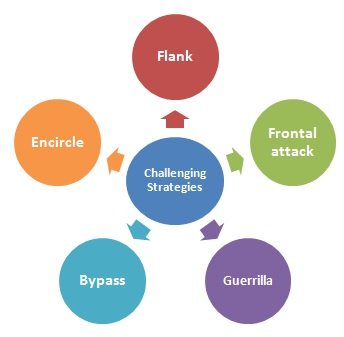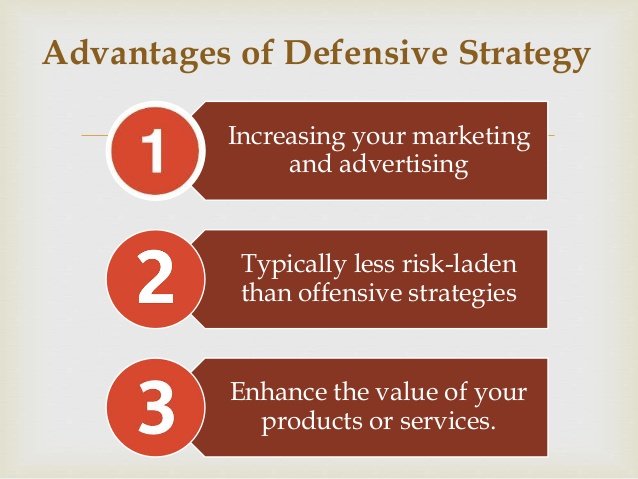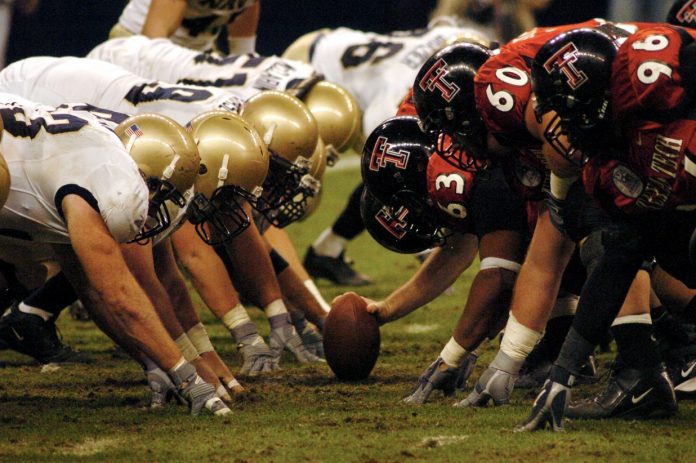Offensive and Defensive Strategies for Industry Leadership
An industry leader is the one who dominates the market in terms of products, sales, and holds a good reputation in the market and smoothly executes its activities in long-run.
Few well-known industry leaders include Microsoft, Mc Donald’s, Nokia, AT&T, Amazon.com, eBay, Levi Strauss etc.
Most of the leaders adopt strategies to protect and reinforce its leadership position to become a dominant leader. The efforts for industry leadership and for acquiring large market share are significant outcomes which would be achieved as a result of competitive advantage and profitability if the company acts as the industry’s biggest company.
There are three distinct strategic moves for industry leadership.

Offensive strategy:
It involves direct and indirect attacks by improving own position by taking away the market share of the competitors. The primary focus of this strategy is to be a first mover and a proactive market leader and to protect itself by standing one step ahead of the competitors and allowing them to follow.
If the leader’s growth is not equal or higher than the average growth rate of the industry then the market shares and position can be easily taken over by its competitors. A firm who wants to lead the markets need to improve the speed of cost reduction, improved customer relations, value added performance characteristics and quality.
Objectives of offensive strategies:
To maximize the sales
To destabilize the current market leader
To acquire market share
Various offensive strategies:

Frontal attack:
A frontal attack is attacking a competitor ahead on by producing similar products with similar quality and price; it is highly risky unless the attacker has a clear advantage. In the frontal attack, firms concentrate on competitor’s strengths rather than weaknesses.
Flank attack:
Flank attack is less risky when compared to that of frontal attack in which firms attacking at the competitor’s weak point or blind spot. In this strategy firms follow the path of least resistance where the competitor is incapable of defending.
Encirclement attack:
It is the combination of both frontal and flank attacks. Here the challenging firm attacks the competitor firm on its entire major fronts i.e. strengths and weaknesses. There are two strategies that can be used under the encirclement attack.
1.Product encirclement:
In this strategy, the challenger firm introduces different types of products with varied features, quality and price.
2.Market encirclement:
In market encirclement strategy the challenger firm introduces the products into the new market segments which are left untapped by the competitor’s firms.
Bypass attack:
Bypass attack is the most indirect form of marketing strategy in which challenging firms produce next generation products to occupy the competitor’s market share. Challengers may diversify into unrelated products with new technology or may enter into new geographical markets.
The challenger firm performs a thorough research and produces next generation products in order to attract the more customers this strategy is also called as leapfrogging strategy
Guerrilla attack:
The guerrilla attack is expensive, but it is less than the frontal, flank and encirclement attacks. In guerrilla warfare, the challenger firm applies strategies with an intention to demoralize and harass the competitor by the following strategies.
Giving free samples to the customers
Allowing the customers to pay in any form i.e. cash, credit or debit cards
Attracting new customers by giving advertisements in social networks
By using powerful advertisement strategies
Defensive strategy:
The principle of this defensive strategy is to make difficult for the competitors to acquire the market share and the new entrants to access the market.
Objectives of a powerful defender:
To maintain the existing market share and to maximize profitability
To reinforce existing market position
To safeguard the existing levels of competitive advantage
To keep up top position in local and existing markets
For raising barriers of entry

Various defensive strategies:
Position defense:
It is a simplest defensive strategy; it involves trying to hold the current position in the market by building brand image and customer loyalty by investing in the current markets.
Mobile defense:
Mobile defense states that business must be flexible in order to adjust to the new environment. It involves making constant changes in the business like new product introduction or simply making changes in the existing product.
Flanking defense:
This strategy states that the defending market share by entering into the new markets and diversification to compensate lose in the existing markets. But the major drawback of this strategy is losing the main focus of the business.
Counter-offensive defense:
Counter-offensive defense is to protect themselves from the counter attacks of the competitors with their own strategies.
Contraction defense:
Contraction defense is a least desirable defense strategy it involves retreating from markets and this strategy allows redeploying organisation’s resources to the other areas.
Muscle flexing strategy:
According to this strategy dominant leader holds a strategy for the protection of its competitive role against its competitors those who threaten its position by making price cuts or adding new market offensives. So to protect their position and to overcome the competitor’s moves, existing firms establish large promotional campaigns and offer better products to their potential customers.




